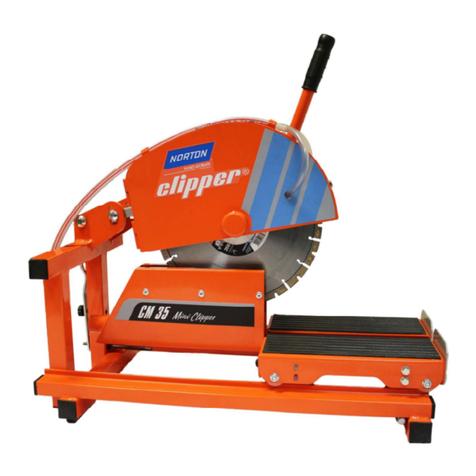
8
1.2 Machine plate
Important data can be found on the following plate located on the machine:
1.3 Safety instructions for particular operating phases
Before commencing work
Before commencing work, make yourself familiar with the working environment at the place of
use. The working environment includes: obstacles in the area of work and manoeuvre, the
firmness of the floor, necessary protection at the site relating to public thoroughfares and the
availability of help in the event of accidents.
Check for correct mounting of the blade regularly.
Immediately remove damaged or badly worn blades, as they endanger the operator whilst
rotating.
Always cut with the blade guard in position.
Only fit NORTON diamond blades to the machine! The use of other tools can damage the
machine!
Attention is drawn to the use of BS2092 safety goggles in conformity with specified Processes
No.8 of the Protection of Eyes Regulation 1974, Regulation 2(2) Part 1.
For security reasons, never leave the machine unattended, untied or unlocked.
While the engine is running
Do not move the machine whilst the blade is running idle.
Do not run the machine without the security guards in place.
Apply cooling water continuously whilst cutting and in good time!
Diesel powered machines:
Always use the fuel advised.
In confined areas, exhaust gases should be evacuated and the job site properly aerated.
Diesel machines, which by their nature emit toxic exhaust gases, must not be used in places
prohibited by the Health at Work Act 1974 or which are prohibited by Factory Inspectors or
Safety Officers.
Diesel is flammable. Before filling the tank, shut down the engine, extinguish all open flames and
do not smoke. Take care that no diesel is spilled on any motor part. Always wipe up spilled fuel.




























